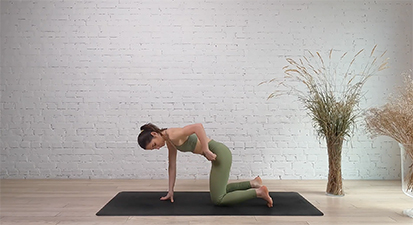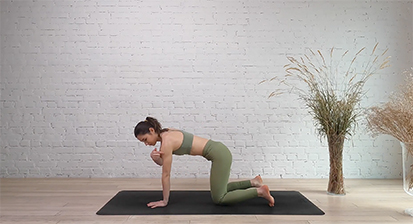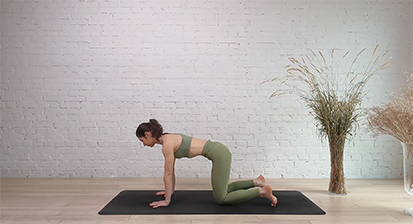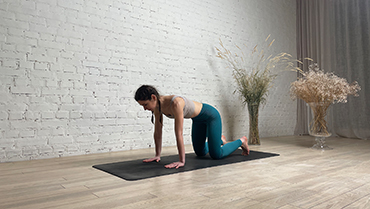Table Top Pose - Bharmanasana

Contents
Table Top Pose or Bharmanasana in Sanskrit (“Brahma” means “table” and “asana” means “pose.”) is a foundation pose for many yoga poses. This is the pose that helps the beginner to align the hands and legs in the right measurements.
Bharmanasana is a beginner pose practiced to help bring balance to the body while the entire muscles in the body are equally stretched. The gentle stretch is at the arms, shoulders, wrists, hips, core, thighs, knees, and spine, balancing and relieving the tensions thereafter.
It is a transition pose forming a part of many yoga sequences like hatha yoga sequences, yin yoga sequences, prenatal Yoga sequences, or restorative yoga sequences. Transition poses help bring stability in the practice as the body moves from one position to another.
Pose Detail
- Body Position: Arm & Leg Support
- By Type: Balancing Yoga Poses, Strengthening Yoga Poses
- Difficulty: Beginners
- By Benefit: Yoga Poses For Neck Pain
Step-by-Step Instructions




Benefits and Contraindications
Lengthens and realigns the spine
Stretches and strengthens the wrists, elbows, arms, shoulders, chest, back, hamstrings, and neck
Improves balance and core awareness
Wrist, shoulder, or knee injury
Arthritis in the knees, shoulders, or hips
Carpal syndrome
Photo poses in different angles

Modifications, Props and Tips
- If you have wrist pain, you can place a folded towel or blanket under your wrists to provide extra padding and support.
- If you have knee pain, you can place a folded blanket or towel under your knees to provide extra cushioning.
- If you have limited shoulder mobility, you can widen your hands slightly and turn your fingers outwards to create more space for your shoulders.
- To engage your core muscles more deeply, you can lift one arm and the opposite leg off the ground at the same time, holding for a few breaths before switching sides.
- If you need extra support and stability, you can place a yoga block or bolster between your thighs and squeeze it gently.
- If you want to increase shoulder mobility, you can place a yoga block or bolster under your hands, raising them higher than your wrists.
Table Top Pose Anatomy
- Arms: In Table Top Pose, the arms are the primary point of contact with the ground. The triceps, biceps, and forearm muscles are engaged to help support the weight of the upper body, while the hands and wrists help to distribute the weight evenly.
- Shoulders: The shoulders are a key component of Table Top Pose, as they help to stabilize the upper body and support the weight of the arms. The deltoid muscles are particularly active in this pose, as they help to lift the arms away from the ground.
- Core: The core muscles, including the rectus abdominis, transverse abdominis, and obliques, are essential for maintaining stability and balance in Table Top Pose. Engaging these muscles helps to protect the lower back and maintain proper alignment throughout the pose.
- Spine: Table Top Pose is a great pose for stretching and strengthening the muscles of the spine. In this pose, the spinal erectors are engaged to help maintain proper alignment, while the rhomboids and trapezius muscles help to support the upper body.
- Hips: The hip flexors, glutes, and hamstrings are all engaged in Table Top Pose, as they help to support the weight of the body and maintain proper alignment. Engaging these muscles can help to improve overall stability and balance in the pose.
Overall, Table Top Pose is a great posture for building upper body strength, improving posture, and increasing overall stability and balance. By engaging and strengthening these key muscle groups, practitioners can experience a wide range of physical benefits that can help to improve their overall health and wellbeing.
Frequently Asked Questions
Variations
- Table Top Pose With Supported Knees
- Table Top Pose with forearms on blocks
- One-Legged Table Top Pose